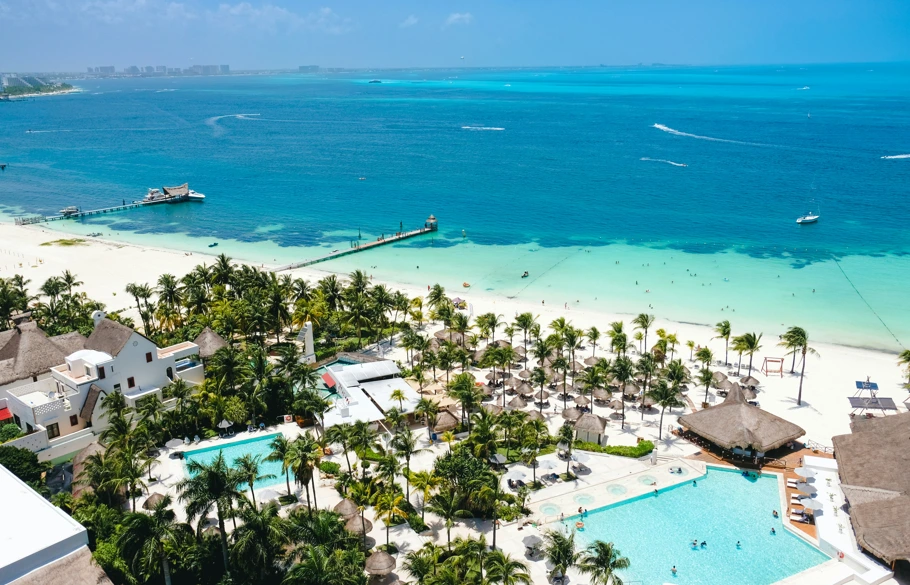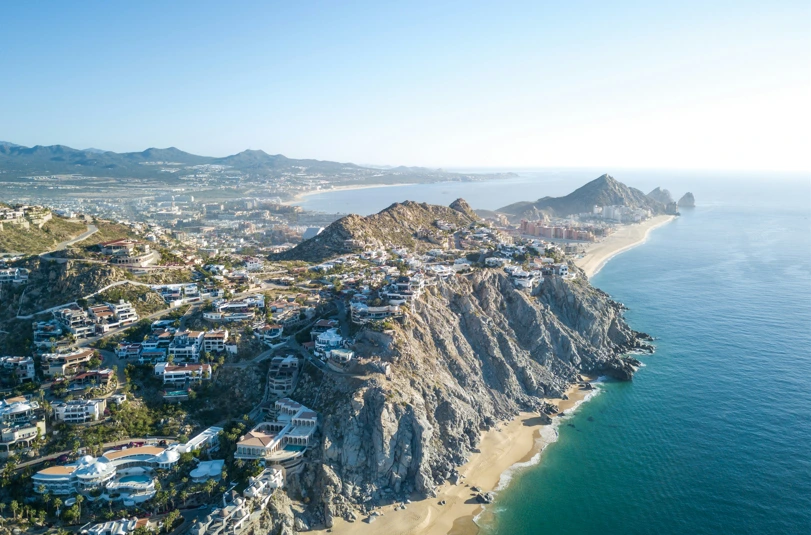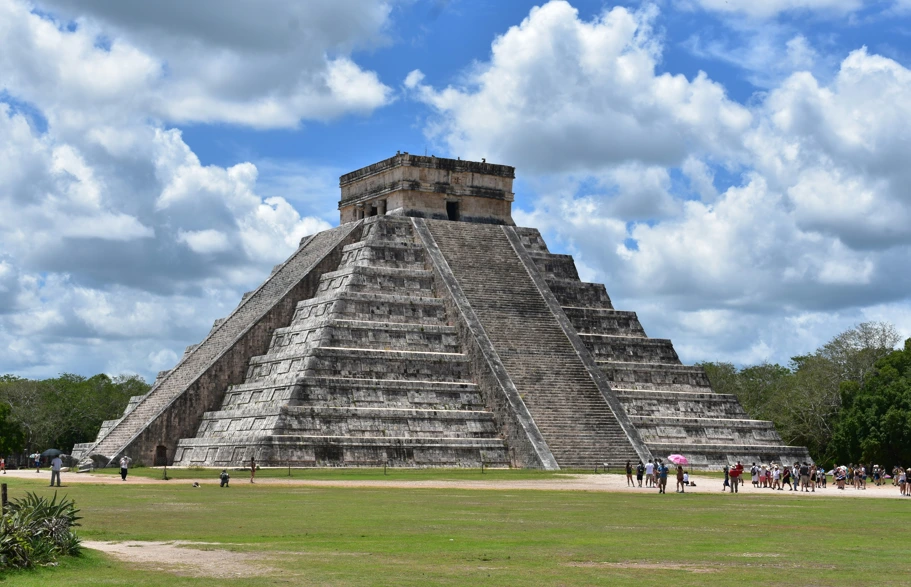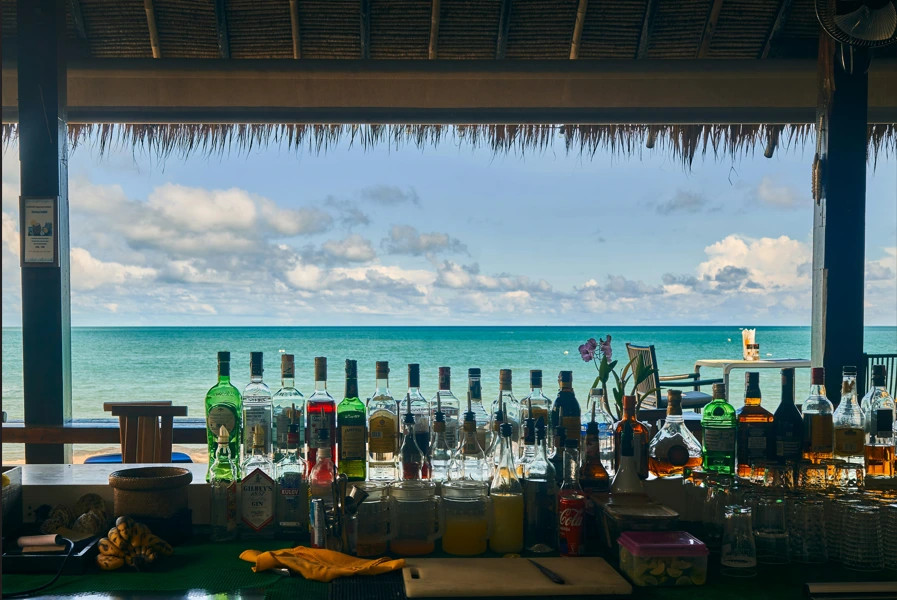Cabo vs. Cancun: Which Is Better for Your Next Vacation?


When dreaming of a sunny escape to Mexico, two names always come up - Cabo San Lucas and Cancun. Both have turquoise water, golden beaches, luxury resorts, and endless margaritas under swaying palms. Yet despite sharing Mexico’s coastline fame, these destinations couldn’t feel more different.
Cabo, perched on the Pacific side at the tip of the Baja California Peninsula, offers rugged desert landscapes, dramatic cliffs, and a laid-back upscale vibe. Cancun, on the Caribbean coast, is the poster child of powdery white sands, bright coral reefs, and nightlife that lasts till dawn.
So how do you choose between the two? In this detailed guide, we’ll compare everything - from weather and beaches to nightlife, cost, and travel convenience - so you can decide which destination matches your style. And of course, we’ll include some smart travel tips, like how to stay connected with a Mexico eSIM while you explore either coast of paradise.
Cabo vs. Cancun at a Glance
| Category | Cabo San Lucas (Los Cabos) | Cancun |
|---|---|---|
| Location | Pacific Coast, Baja California Peninsula | Caribbean Coast, Yucatán Peninsula |
| Vibe | Chic, tranquil, desert-meets-sea | Lively, tropical, party atmosphere |
| Weather | Dry and sunny year-round | Humid and warm, tropical rains in summer |
| Beaches | Scenic and dramatic; some not swimmable | Calm turquoise water, perfect for swimming |
| Activities | Whale watching, desert tours, luxury yachts | Snorkeling, ruins, cenotes, nightlife |
| Accessibility | Best from West Coast U.S. | Best from East Coast U.S. |
| Ideal For | Couples, luxury travelers, golfers | Families, groups, party seekers |
Weather & Best Time to Visit
One of the first questions travelers ask: What’s the weather like in Cabo vs. Cancun?
Cabo’s Dry Desert Sunshine
Cabo enjoys a mild desert climate with almost 350 sunny days a year. From November through May, expect perfect blue skies, low humidity, and temperatures hovering between 75°F and 85°F (24–29°C). Summer months (June–September) get warmer, around 90°F (32°C), but still comfortable due to low humidity.
The Pacific breeze keeps Cabo fresh, and rain is rare. Hurricane season technically runs from June to October, but major storms seldom hit the Baja Peninsula directly. That means winter travelers can count on stable sunshine which is ideal for escaping cold U.S. winters.
Cancun’s Tropical Warmth
Cancun, on the Caribbean side, is tropical and humid year-round. Temperatures range from 77°F to 88°F (25–31°C), with high humidity and more frequent rain showers, especially from June to October.
However, December to April is Cancun’s prime season - perfect beach weather, calm turquoise seas, and lively events. The water temperature stays warm (around 82°F/28°C), so swimming and snorkeling are always inviting.
Verdict
- If you love dry heat and sunshine without humidity, go for Cabo.
- If you crave lush tropical vibes and bathtub-warm seas, Cancun is unbeatable.
And wherever you go, don’t forget that connectivity matters. Whether you’re working remotely from your resort balcony or posting sunset reels to Instagram, our Maaltalk eSIM keeps you online seamlessly - no need to swap SIM cards or pay sky-high roaming fees.

Beaches & Scenery
Both Cabo and Cancun offer spectacular beaches but they’re different worlds visually and experientially.
Cabo: Dramatic and Untamed
Cabo’s beaches are golden, wide, and framed by desert cliffs and cacti. The contrast of arid land and deep blue Pacific creates postcard-worthy views.
- Playa del Amor (Lover’s Beach): Nestled between two massive rock formations near the famous Arch of Cabo San Lucas. Accessible only by water taxi.
- Medano Beach: The main swimmable beach in Cabo San Lucas, lined with lively beach bars and resorts.
- Chileno Bay & Santa Maria Beach: Great for snorkeling and calm waters.
Cabo’s Pacific waves are powerful and many beaches are not swimmable. But the rugged beauty, stunning sunsets, and quiet coves give it a cinematic quality.

Cancun: White Sands & Turquoise Waters
Cabo’s beaches are golden, wide, and framed by desert cliffs and cacti. The contrast of arid land and deep blue Pacific creates postcard-worthy views.
- Playa Delfines: A public beach with soft powder sand and gentle surf which is great for families.
- Playa Norte (Isla Mujeres): Just a short ferry away, famous for calm turquoise waters.
- CHotel Zone Beaches: Long stretches of sand lined with resorts and beach clubs.
Cancun’s shallow waters glow turquoise under the sun so it’s no wonder it’s considered one of the world’s best beach destinations.
Verdict
- For dramatic coastal scenery, Cabo wins.
- For picture-perfect swimming beaches, Cancun takes the crown.
Things to Do & Experiences
Both destinations offer endless activities but the type of adventure differs.
Cabo Adventures
- Whale Watching (Dec - April): See majestic humpbacks and gray whales breaching near the coast.
- Desert ATV Tours: Explore dusty trails and cactus-lined canyons.
- Snorkeling and Diving: Head to Chileno Bay or Cabo Pulmo National Park, a UNESCO marine reserve.
- Luxury Yachting: Cruise along Land’s End or spend a sunset sailing trip with champagne.
- Golf: Cabo boasts world-class golf courses designed by Jack Nicklaus and Tiger Woods.
The vibe here is relaxed, upscale, and ideal for those who enjoy nature mixed with comfort.
Cancun Adventures
- Mayan Ruins: Visit Chichén Itzá (a New Wonder of the World), Tulum, or Coba — all within day-trip distance.
- Cenotes: Swim in crystal-clear underground sinkholes unique to the Yucatán Peninsula.
- Snorkeling & Diving: Explore reefs near Isla Mujeres or Cozumel.
- Water Sports: Jet skiing, parasailing, and paddleboarding are everywhere.
- Nightlife & Events: Cancun is known for its legendary parties and festivals.

Verdict
- Cabo suits travelers who prefer luxury relaxation, nature, and water excursions.
- Cancun is perfect for culture lovers, families, and party enthusiasts.
→ Pro Tip: Use our free MaaltalkNow app to access maps, book excursions online, or translate menus - all without hunting for Wi-Fi. It’s a lifesaver when you’re hopping between cenotes or desert tours.
Nightlife & Dining
Cabo: Elegant and Easygoing
Cabo’s nightlife is sophisticated yet relaxed. Expect beachfront lounges, live music, and cocktails with ocean views.
Top spots include:
- The Office on the Beach: Famous for sunset dinners right on the sand.
- Cabo Wabo Cantina: Rock legend Sammy Hagar’s lively bar.
- Sunset Monalisa: A romantic cliffside restaurant with breathtaking views.
Dining in Cabo leans toward seafood, fusion cuisine, and farm-to-table experiences. Many resorts host gourmet restaurants led by celebrity chefs.
Cancun: Energetic and Wild
Cancun is Mexico’s nightlife capital. Clubs, beach bars, and party cruises light up the coast every night.
Top spots include:
- Coco Bongo: Legendary for its high-energy shows and dance floors.
- Mandala Beach Club: The ultimate day-to-night beach party.
- La Habichuela: A local gem serving Mayan-inspired dishes.
Food in Cancun ranges from authentic Mexican street tacos to high-end international restaurants. The Hotel Zone offers endless dining choices within walking distance.
Verdict
- Cabo: Best for chic, romantic evenings.
- Cancun: Best for high-energy nightlife and social scenes.

Cost & Accessibility
Getting There
- Cabo San Lucas (SJD Airport) is best connected to West Coast cities like Los Angeles, San Diego, Phoenix, and San Francisco - often with direct flights under 3 hours.
- Cancun International Airport (CUN) has direct flights from most major U.S. cities, especially from the East Coast and Midwest.
Costs
Cabo tends to be slightly pricier, with luxury resorts and fine dining dominating. Cancun, by contrast, offers a wider range of accommodations, from budget-friendly hotels to all-inclusive packages.
| Expense | Cabo (Average) | Cancun (Average) |
|---|---|---|
| Hotels | $250–$600/night (4–5 star) | $150–$400/night (4–5 star) |
| Meals | $50–$100/day per person | $30–$80/day per person |
| Activities | $100–$200 per excursion | $50–$150 per excursion |
Travel Convenience
Both destinations have modern airports, but Cancun’s is busier and more connected internationally. Local transportation is easy in both - taxis, shuttles, and rental cars are abundant.
Connectivity Tip: An eSIM lets you land, activate data instantly, and skip the airport SIM chaos. Plans are affordable and work across all of Mexico - so you can stay connected in both Cabo and Cancun under one plan.
Safety, Crowds & Vibe
Safety is always top-of-mind for travelers. Fortunately, both Cabo and Cancun are considered safe for tourists, especially within resort zones.
Cabo
- Generally quiet and low-crime, with strong tourism security.
- Attracts couples, honeymooners, and older travelers seeking peace.
- Streets and beaches feel relaxed and uncrowded, even during high season.
Cancun
- Also safe, but busier and more urban. Use standard travel precautions (avoid isolated areas at night).
- Popular with younger crowds, groups, and families.
- The Hotel Zone can feel crowded in winter and spring, especially during spring break.
Verdict
- Choose Cabo for tranquility, safety, and luxury.
- Choose Cancun if you enjoy vibrant crowds and energetic atmospheres.
Final Verdict: Which Is Better for You?
When it comes to Cabo vs. Cancun, there’s no wrong choice — only what fits your style.
Choose Cabo if you crave:
- Stunning Pacific sunsets
- Upscale resorts and fewer crowds
- Adventure in desert landscapes
- A romantic, refined escape
Choose Cancun if you love
- White-sand Caribbean beaches
- Rich Mayan culture and cenotes
- All-inclusive fun and nightlife
- Easy access from U.S. cities
Many seasoned travelers visit both over time - flying into one and out of the other to experience two sides of Mexico’s beauty.
Travel Connectivity Tip: Stay Online with eSIM
No matter which destination you choose, staying connected makes travel smoother and safer. That’s where our Maaltalk Mexico eSIM will come in handy!
With our eSIM, you can:
- Activate your Mexican data plan before departure - no need for a physical SIM.
- Avoid expensive roaming fees.
- Enjoy instant internet access for maps, reservations, and messaging apps.
- Switch destinations (like Cabo → Cancun) seamlessly on the same plan.
It’s the smartest way to stay online when traveling abroad - especially in countries like Mexico where reliable data makes navigation, translation, and trip planning so much easier.




